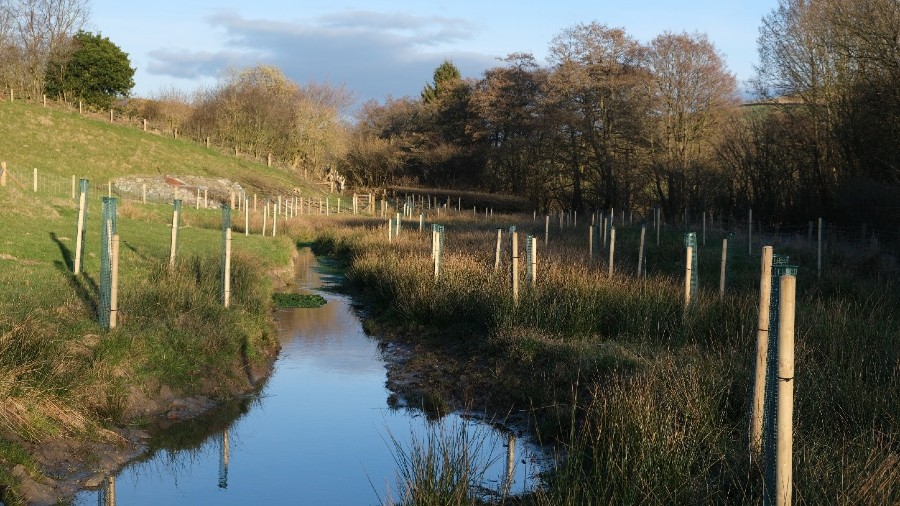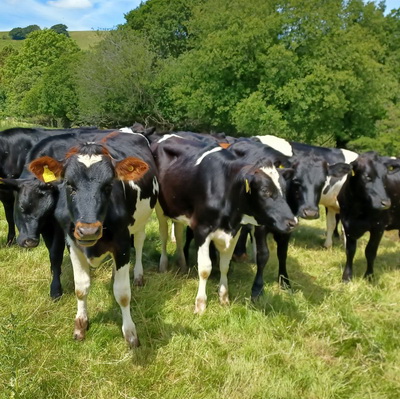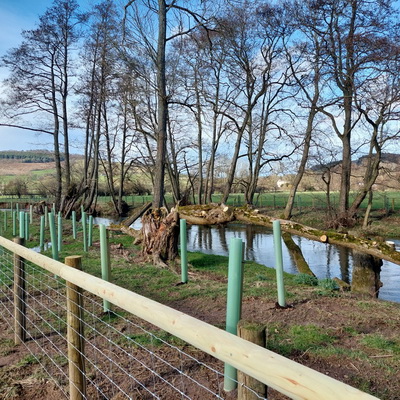This is a Defra funding programme for farmers and land managers in England’s Protected Landscapes.
It's open to farmers and land managers (including from the private, public and charity sector) with land within the Shropshire Hills National Landscape. The grants are for projects that:
- support nature recovery,
- tackle climate change,
- provide opportunities for people to discover, enjoy and understand the landscape and cultural heritage,
- support nature-friendly, sustainable farm businesses.
We can support you with advice, help with the development of your project and guide you through the application process.
listen to our webinar about the programme, Jan 2024

Our Farming in Protected Landscapes Advisers are:
- Alison Jones, email alison.m.jones@shropshire.gov.uk or telephone 01743 254745.
- Helen Oliver, email helen.oliver@shropshire.gov.uk, or telephone 01743 251845.
Programme Overview
Click on the links below for an overview, but please read the Guidance for detailed information if you are considering making an application:
What will the programme pay for?
What the programme doesn’t support
The programme is open to all farmers and land managers (including from the private, public and charity sector) with land within the Shropshire Hills National Landscape.
view the National Landscape boundary
You must manage all the land included in the application, and have control of all the activities you’d like to undertake, or you must have written consent from all parties who have this management and control.
Other organisations and individuals can apply, as long as they do this in collaboration with a farmer or land manager, or in support of a farmer or group of farmers.
Common land is eligible for support through the Programme. You can apply as a landowner with sole rights, or as a group of commoners acting together.
Further detailed guidance on eligibility is contained within the guidance, see pages 3-6.
What will the programme pay for?
The Programme will pay for projects that provide value for money and meet at least one of the outcomes listed below, under four themes, listed below. Projects must also help to deliver local conservation priorities in the Shropshire Hills. Funding is for one-off projects covering these areas of work, not an agri-environment scheme.
Climate
- More carbon is stored and/or sequestered
- Flood risk is reduced
- Farmers, land managers and the public better understand what different habitats and land uses can store carbon and reduce carbon emissions
- The landscape is more resilient to climate change
Nature
- There is a greater area of habitat improved for biodiversity
- There is an increase in biodiversity
- There is greater connectivity between habitats
- Existing habitat is better managed
People
- There are more opportunities for people to explore, enjoy and understand the landscape
- There are more opportunities for more diverse audiences to explore, enjoy and understand the landscape
- There is greater public engagement in land management, such as through volunteering
- Farmers and land managers feel increasingly comfortable with providing public goods
Place
- The quality and character of the landscape is reinforced or enhanced
- Historic structures and features are conserved, enhanced or interpreted more effectively
- There is an increase in farm business resilience
If an applicant will not make a commercial gain through a project, they could receive up to 100% of the costs. Where the project supports a clear commercial gain to you then you can be paid up to 40% of eligible costs, and if the project generates some commercial benefit to you but is primarily delivering public goods, then this will be paid up to 80% of eligible costs.
The programme will work alongside – not in competition with – Defra’s existing and new schemes, adding value where it is most needed. If a potential project can be rewarded through those schemes instead, you will be made aware of them.
If an activity is equivalent to one under Countryside Stewardship (CS), the programme payment rate will be the same as the Stewardship rate - you can search for the CS grants available, the codes, the rates and the grant requirements at https://www.gov.uk/countryside-stewardship-grants
Applications are scored against the following categories:
- Project outcomes (40%) - this includes deliver under the four themes of Climate, Nature,
People and Place and also fit with our local Shropshire Hills priorities. - Value for Money (20%) – this includes demonstrating an efficient use of resources and
cost-reasonableness. - Sustainability / legacy of projects (20%) – this includes demonstrating that benefits could
be maintained, and may include the likelihood of behaviour change and increased capacity, as well as more tangible measures. - Ability to deliver (20%) – demonstrating the capability to deliver in the timelines required
The Local Assessment Panel meets every 6 to 8 weeks to review applications and award grants.
- Applications over £10,000 are reviewed by the Local Assessment Panel.
- Applications for over £5,000, but less than £10,000 are reviewed by a senior member of the AONB Partnership team, but at the discretion of the FiPL team, may be referred for assessment by the Local Assessment Panel.
- Applications for less than £5,000 are reviewed by a senior member of the National Landscape team (who has not been involved in the application or advice provided).
You can submit your application as soon as it is ready.
What the programme doesn’t support
This list has been compiled following enquiries about the programme:
- Work on domestic property
- Solar panels
- Renewable energy (except where it is provided solely for the purpose of contributing to a wider Farming in Protected Landscapes project)
- The purchase of farm animals and farm vehicles e.g. tractors, quad bikes
- Purchase of second-hand machinery
- Electric vehicle charging points
- Work in school grounds, churchyards or road verges
- Work which is a statutory requirement
Countryside Stewardship (CS) - applicants can search for the CS grants available, the codes, the rates and the grant requirements
Countryside Stewardship Capital Grant Scheme
Countryside Stewardship Mid Tier & Wildlife Offers
Farming Investment Fund - this is divided into two types:
- Farming Equipment and Technology Fund provides investment towards specific items of equipment which will improve productivity and efficiency for farming, horticultural and forestry businesses:
- Farming Transformation Fund provides grants towards large capital items to help businesses improve productivity, profitability, and environmental sustainability. They are:
- Water Management.
- Improving Farm Productivity. https://www.gov.uk/guidance/farming-investment-fund#farming-transformation-fund
- Adding Value. No information available at present.


